In Images: The Extraordinary Evolution of 'Blind' Cavefish
'Blind' Mexican Cavefish

Although their appearance varies wildly, the freshwater Mexican cavefish (Astyanax mexicanus) is the same species as the surface-dwelling Mexican tetra.
So-called "Blind" Mexican cavefish are an example of convergent evolution, a new study shows. This type of evolution is characterized by several populations repeatedly, and independently, losing their sight and pigmentation as they adapt to their dwellings. [Read related article: Cavefish Not Blind to Attractions of Surface-Dwelling Cousins]
Click on for more images of the ghostly cavefish and how it compares to its surface-dwelling cousin.
Collecting Samples

Researchers from Portugal, America, and Mexico studied DNA samples from populations of cavefish, which were collected from freshwater caves located in three distinct regions of northeastern Mexico. They compared the DNA to samples taken from various populations of the cavefish's surface-dwelling cousins to better understand the evolutionary origins of the physical differences between the fish.
This map shows the cave clusters that the A. mexicanus samples were collected from.
Hybrid Fish
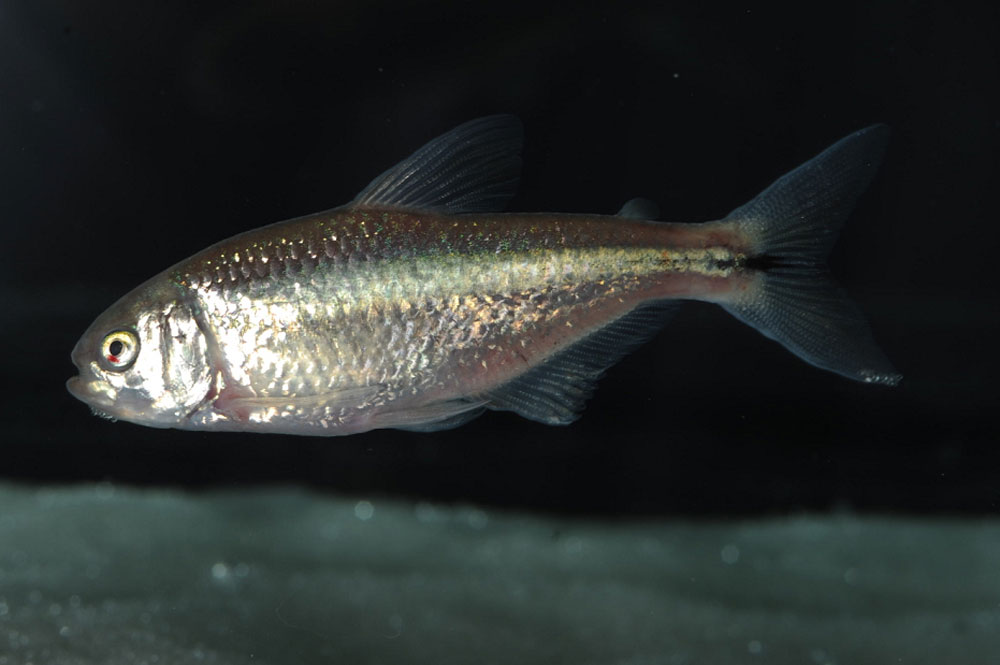
This "hybrid" A. mexicanus was collected from a cave called Yerbaniz in northeastern Mexico. The presence of eyes and dark grey and green coloring is "proof of gene flow from the surface into the cave," study researcher Richard Borowsky of the Cave Biology Group at New York University told LiveScience.
The Cavefish's Wide-Eyed Cousins

One theory of the A. mexicanus' varying populations is that, historically, at least two groups of the fish lived in the rivers of Sierra de El Abra, Mexico. One group colonized the caves and became extinct on the surface. The other group then restocked the rivers, but also invaded the caves, joining the original cave-dwelling population, according to the researchers.
These two Mexican tetra are surface-dwellers collected by the researchers, who used DNA extraction and genotyping to study their genetic similarities.
Immigrant Fish
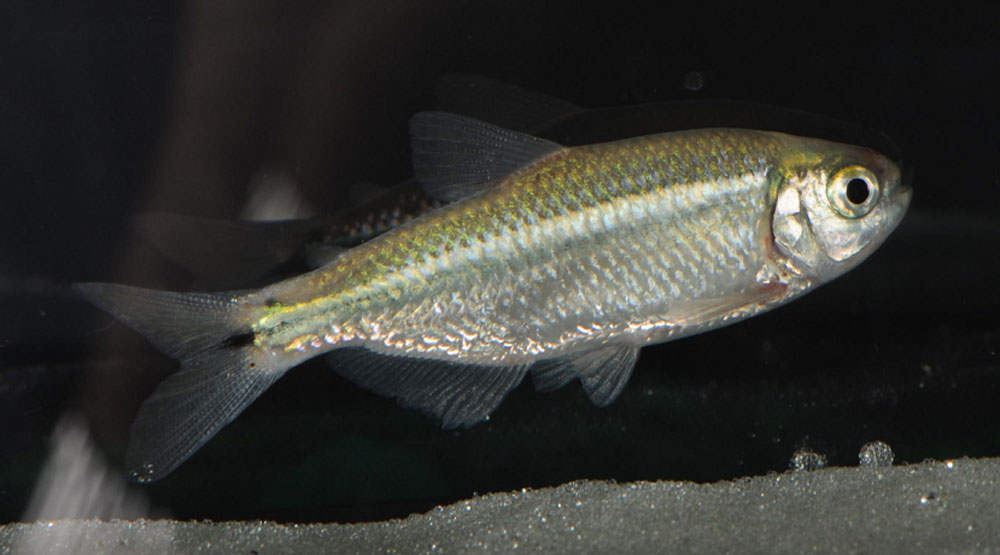
The study found that, because the cavefish are a variant of the Mexican tetra and can interbreed, some surface-dwelling fish migrate and integrate into the cave populations — and vice versa.
This A. mexicanus surface fish was collected in a cavein northeastern Mexico andis an immigrant, having left its surface-dwelling group to join the cavefish population, according to the researchers.
All in the Family
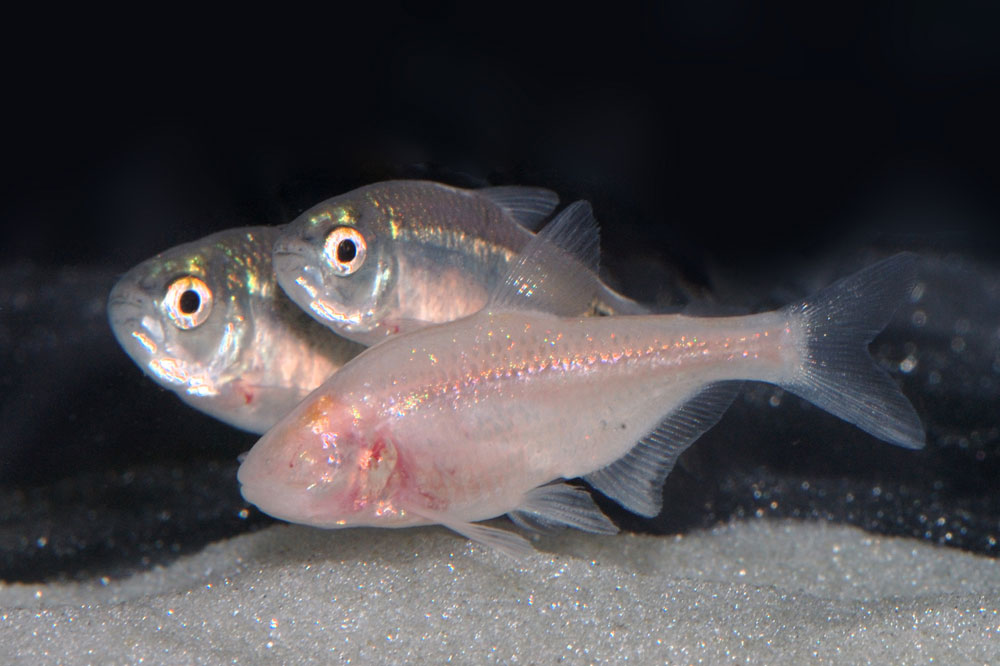
The freshwater Mexican cavefish is the same species as the surface-dwelling Mexican tetra, although their appearance varies wildly. While the Mexican tetra has eyes and a silvery-gray body, the Mexican cavefish has lost its pigmentation and grown skin over its now useless eyes as it gradually adapted to living in complete darkness.
Here, a so-called "blind" Mexican cavefish, with its pale pinkish coloring and lack of eyes, swims along with its darker, sighted cousin, the Mexican tetra.
A Unique Specimen
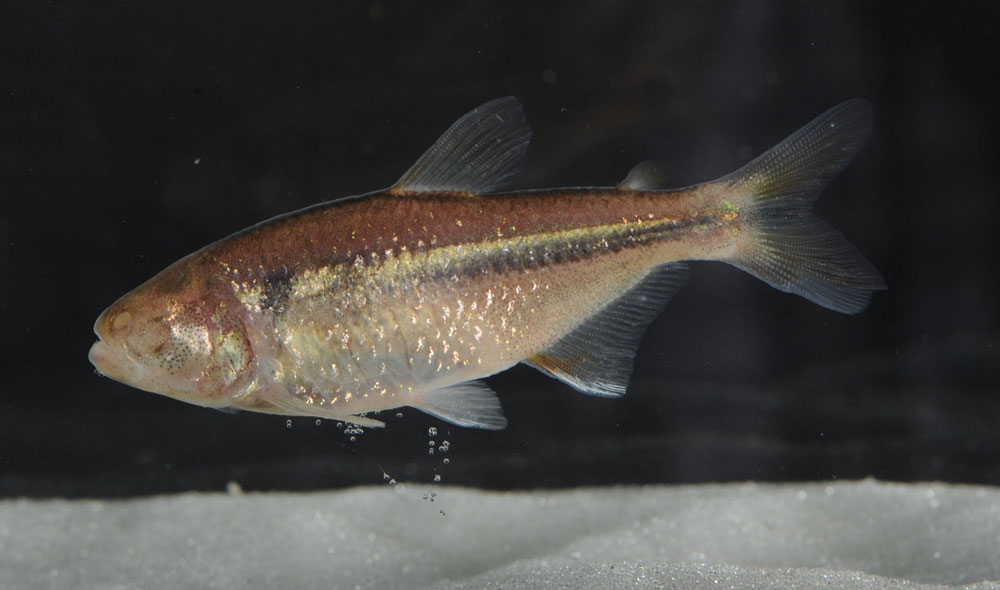
This cavefish was collected from a cave called Caballo Moro in northeastern Mexico. Although its eyes are useless and grown over, this cavefish has retained the darker coloring of its surface-dwelling Mexican tetra relatives.
"This cave fish is from an unusual population that seems to be evolutionarily young and has not achieved full reduction of eyes and pigmentation," study researcher Richard Borowsky told LiveScience.
Borowsky also noted that the Caballo Moro cave is unusual because it has a collapsed roof that lets in some sunlight. The present of light in the cave's water may explain why the cavefish possesses dark pigmentation, he said.
Sign up for the Live Science daily newsletter now
Get the world’s most fascinating discoveries delivered straight to your inbox.
Eyeless Wonder
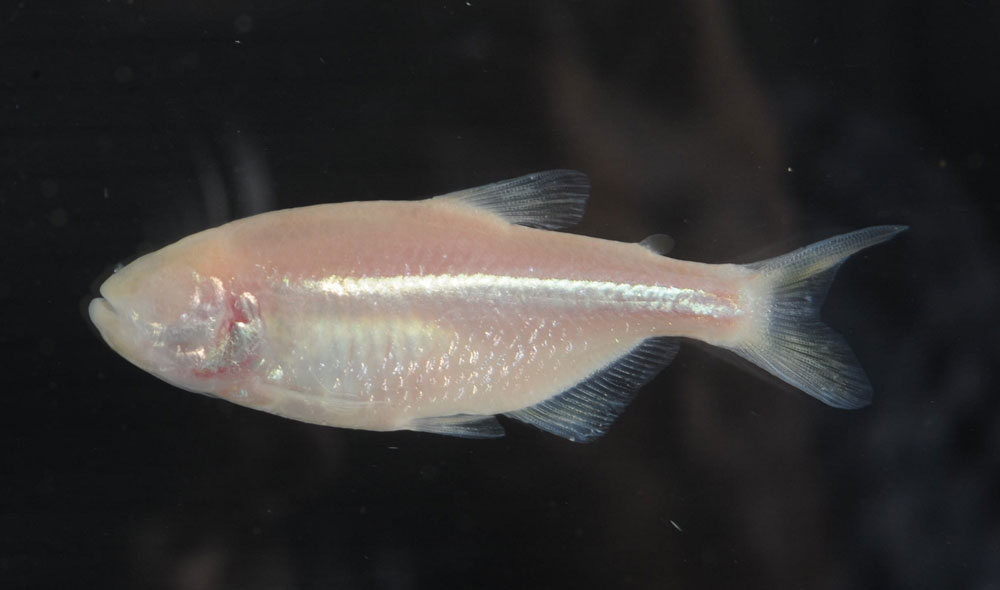
Although their sightless eyes are covered by flesh, the so-called "blind" Mexican cavefish cavefish aren't fully blind, because they have retained an organ called the pineal gland, which enables them to detect light.
Advantage of the Eyeless
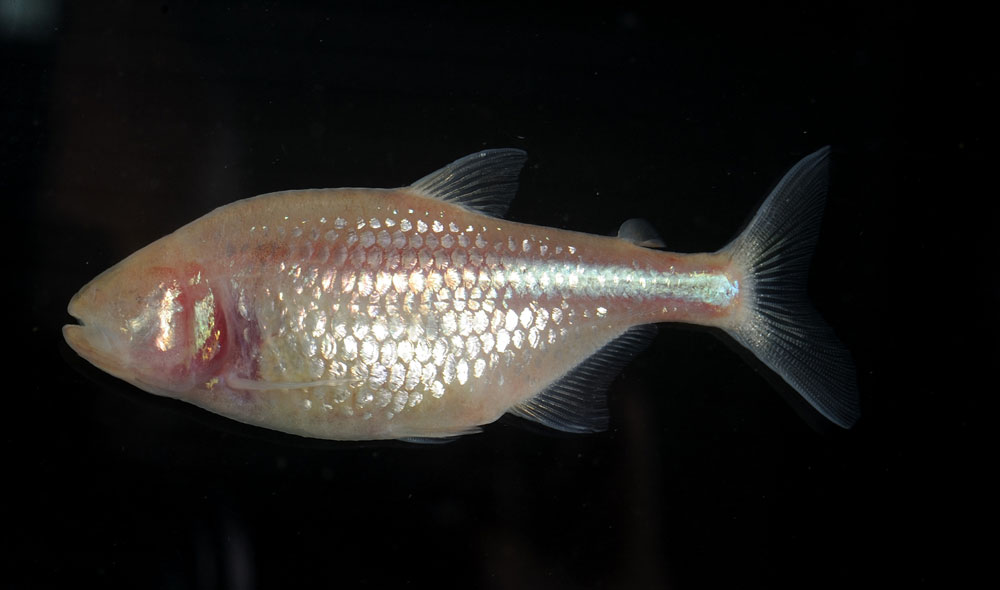
"Despite interbreeding and gene flow from the surface populations, the eyeless 'cave phenotype' has been maintained in the caves," study researcher Martina Bradic said in a statement. "This indicates that there must be strong selection pressure against eyes in the cave environment."
"Whatever the advantage of the eyeless condition, it may explain why different populations of A. mexicanus cavefish have independently evolved the same eyeless condition, a striking example of convergent evolution," Bradic added.
Same Species, Different Appearance
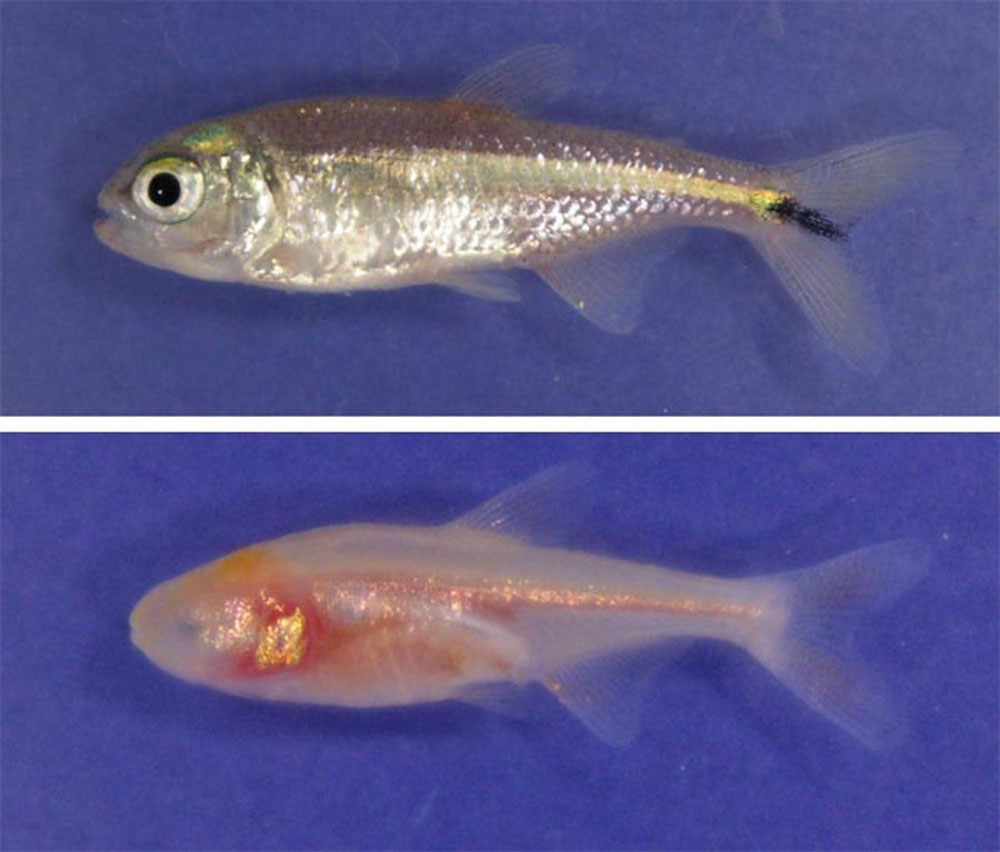
One theory of the A. mexicanus' varying populations is that, historically, at least two groups of the fish lived in the rivers of Sierra de El Abra, Mexico. One group colonized the caves and became extinct on the surface. The other group then restocked the rivers, but also invaded the caves, joining the original cave-dwelling population, according to the researchers.









